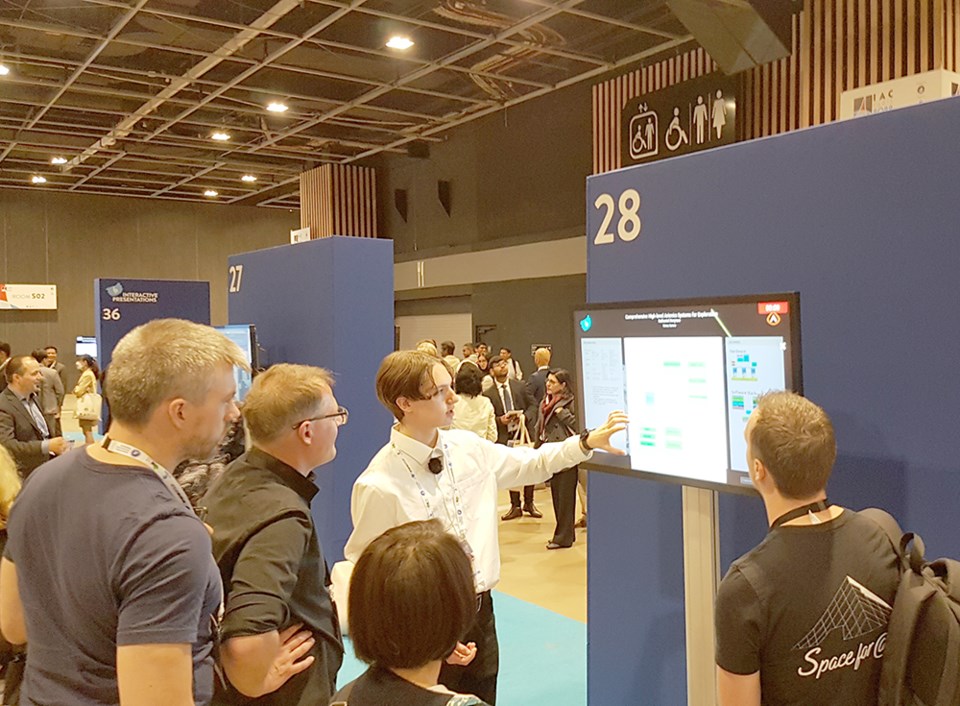Brooks Secondary School grade 11 student Nathaniel Hargrave has his sights set on the stars.
Having attended the International Astronautical Congress in Paris with more than 9,300 delegates from 110 countries, at 16, Hargrave was the youngest presenter at the conference, which featured university students, aerospace industry professionals and scientists from around the world.
“It was amazing,” said Hargrave.
He said he had been interested in space for many years. He came across an organization called Nexus Aurora, which describes itself as a global citizens science community contributing to permanent human space settlement, and became interested in the organization’s objectives.
The project he presented in Paris, he had started on his own, and when he discovered Nexus Aurora, he thought it would be a good place to advance the plan.
“I put together a proposal and got my project accepted into that group, which is how I continued working on it,” said Hargrave.
He said the project he presented in Paris is based on an idea to do with spacecraft computers.
“Spacecraft have a lot of problems in the radiation environment, so my project was trying to solve that,” he added.
He had previously been working on concepts for a space tug to move items around in space.
“Obviously, it was totally over-ambitious,” said Hargrave.
He then had been looking at engine design and looked at the systems he would need, including avionics, which are aerospace electronics. He started researching options for that, the difficulties and what was available, and that’s how he started working on the project he presented in Paris.
Hargrave, who had been home-schooled for most of his time in the educational system, enrolled at Brooks Secondary School in 2021. He said while at Brooks, he began seriously looking at the project, even spending his lunchtimes trying to figure out the next step.
To advance his project, Hargrave wrote an abstract and submitted it to the International Astronautical Congress. He said he found out about the congress through Nexus Aurora because they, as a group, have presented projects in other years.
The abstract came together relatively easily for Hargrave. He said he received support from Nexus Aurora people who had written abstracts for the previous year’s congress.
“That definitely contributed to how good it was,” said Hargrave. “It was a very good process and I learned a lot.”
Hargrave said after submitting the abstract, in April, he received confirmation that it had been accepted, so that’s when he finalized the design he was working on.
“I figured out the scope of how deep into the details to go,” said Hargrave. “Then, I started actually writing.
“The paper was a pretty high-level overview of the idea for the design. There were a couple of specific components I’d selected and I outlined how the software was going to work. It was an interactive presentation. There was a big hall with big touchscreens and people would gather around.”
Hargrave said he had an assigned time for his presentation and he put together all of the materials displayed on the touchscreen. He said he designed some graphics along with text to outline his project.
Concept conversation
While at the congress, Hargrave met another person who was doing a presentation on a similar subject, so they were able to have a good conversation about the dynamics of what they were presenting. Hargrave had actually seen the other person’s presentation before Hargrave did his own presentation and talked to the other presenter afterward.
“We were looking at different parts of the design, but it was a similar overall concept,” said Hargrave.
He said he was “kind of nervous” when presenting, but he had practiced it before the actual event. He ended up cutting some of his content because he didn’t want to go over his presentation time allotment. That provided time for questions.
Hargrave was able to attend a number of other sessions as well at the congress.
“It was super cool,” he said. “I went to one of the plenary sessions in a giant room with a bunch of people there.
“The congress was for five days and there were 10 smaller presentation rooms that always had something going on. Beforehand, I looked at the schedule and went to the ones that looked interesting. I learned a bunch.”
Hargrave said there was a Canadian networking breakfast one of the mornings where all the Canadian delegates gathered. He was able to meet people with similar interests. He talked to a couple of people doing similar work to his and met some Canadian university students and some people from industry, which, he said, was amazing.
In school, Hargrave’s favourite courses include physics, chemistry and band. He acknowledges that great understanding of the sciences will be important for his post-secondary studies.
He hasn’t decided on where he would like to go to university. He said University of British Columbia’s engineering program looks good. He has also had some discussions with people at Carleton University in Ottawa.
“I’m still investigating on that front,” said Hargrave.
After attaining his undergraduate degree, he will look for a masters program that supports his interest in space.
“There’s so many subfields, it’s definitely hard to decide which to focus on.”
Hargrave said he would like to travel in space at some point.
“The path toward that is better if I focus on working in aerospace and building up experience there,” said Hargrave. “I think that is a better path for going into space than the traditional astronaut path because for projects such as colonizing Mars, it’s not going to be a small crew of trained astronauts, it’s going to be a larger crew of specific specialists.”
In the meantime, Hargrave is helping with some Nexus Aurora projects, which includes a rover design that was accepted to go to a simulated Martian habitat out in a desert. He said the organization is also working on an education project to try and get people his age interested in the field.




